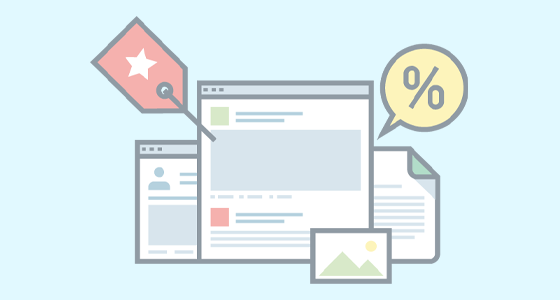
At a certain point in your business’s scale, expanding to sell internationally just makes sense. Of course, as an Ecommerce business, your website serves as your customers’ portal to everything you have to offer, which makes accessibility, readability and currency exchange crucial for international B2Bs. When it comes time to create a multilingual website, keep these essentials in mind to leave borders behind.
Why You Need a Multilingual Website
According to the pro translators at Beyond Wordz, 73% of people browsing the internet don’t speak English as a first language, 72% browse in their native language, and — perhaps most revelatory — 56% say that browsing in their preferred language is more important to doing business than price. If those stats alone don’t convince you, there’s more.
In addition to being customer-centric and culturally sensitive — both of which certainly won’t hurt your customer loyalty and retention metrics — making your website multilingual is a comparatively cost-effective method for attracting new customers, increasing your sales and potentially offering something that your competitors don’t. A multilingual site also increases your overall web presence, improving your SEO in turn. On a marketing level, advertising in less established or underserved markets is often more cost-effective than spending your ad dollars on saturated English-speaking markets while having a more globalized reach can inherently bolster your brand’s image.
6 Tips for Setting Up Your Multilingual Website
While the actual translation of your multilingual website will most likely be outsourced (which doesn’t mean that it’ll be a hands-off process by any means), the bulk of responsibilities in the planning and decision-making stage fall to you. Well before your updated site goes live, here’s what you can do to help build a sturdy multilingual foundation.
1. Set Clear Goals
How many languages are within your website budget? Are you aiming for specific countries where that language is primarily used? If so, what is the state of your specific B2B market in the regions you’re targeting? How often do you plan to update the site, or provide new international content? How many employees will that require to maintain? Start with these questions to make sure your vision is crystal clear before moving forward.
2. Hire Translators
Creating a multilingual website is not a task you can leave to Google Translate — stick with professional translators who are experienced in the languages you’re targeting as well as fluent in B2B nomenclatures. Translators and translation services specializing in business sites not only ensure error-free, accurate localization, but they can also help you translate your homepage as well as assist with multilingual search engine optimization (SEO), app localization and multimedia translation, too. Remember, web developers aren’t translators — you’ll need to have the content of your site fully translated before construction can start.
3. Consider Design Changes
Different design choices resonate with different cultures and regions of the globe. Online customers from some countries may prefer video content, while others prefer text; some images or colors go over in certain regions of the world better than in others. Consider bringing on web designers well versed in the markets you’re branching out to make your website as welcoming as possible, no matter who’s viewing it.
4. Leverage Zoey’s Features
Zoey’s Visual Design Editor helps you implement those design changes and lots more. With Zoey, you won’t need a developer to design and launch core features and multiple pages suited specifically for Ecommerce and wholesale sites, including homepages, category pages, product pages, content pages and order portals. Our built-in themes allow you to easily customize fonts and colors across those pages, or you can choose global themes for a consistent look — even across languages.
Our blocks system allows you to intuitively add more than 100 features to those pages, too, including category listings, product displays, headers and footers, image galleries, videos and marketing content. You can even segment your designs by group, which helps streamline your workflow when customers are grouped based on locale or language. As you work, you can preview and adjust your new, multilingual site across desktop and mobile formats.
Of course, we don’t stop with design. Zoey’s website tools enable users to select a language or currency via a simple drop-down menu, so they always feel right at home when purchasing. Rather than having multiple — and potentially confusing — URLs across different languages or markets, features like this allow you to direct all of your customers to a single URL. And that makes your SEO happy, too.
5. Fine-Tune Your SEO
SEO isn’t one-size-fits-all; it can very much be a regional thing. To get the most eyes on your site, ensure that all of your URLs, meta descriptions and hreflang tags are fully translated. Consult your translation team on creating language-specific long-tail keywords, which can vary greatly in effectiveness depending on the region.
6. Don’t Neglect the Details
Total text translation, currency conversion and design considerations are all foundational needs for your new multilingual site, but don’t neglect the details. Ensure that local dates and times are reflected properly, for example. Ulatus points out another often underlooked aspect of localizing a website: different languages simply have different space requirements. For instance, Japanese text calls for about 60% more space than English while Portuguese requires about 15% less space, so tailor your designs accordingly.
Reach Out to Zoey
A strong foundation for your multilingual site is essential because it allows you to build upon that stable baseline of functionality with changes and updates as you grow — it’s all about making the process seamless.
For Ecommerce transactions, Zoey allows you to send bills and collect payments directly through services such as Stripe and Authorize.net. When it’s time to make your website multilingual, Zoey enables you to set up a storefront that displays pricing in multiple currencies, auto-translates commonly recurring words across numerous languages and hosts your catalog in multiple languages, too, so that you can successfully sell in multiple jurisdictions.
For those in the Ecommerce world, it’s comforting to know that the global digital population numbers around 5 billion and growing. For every language your website supports, your access to those numbers, and to that virtually limitless opportunity, grows. Let us help you welcome your new customers — reach out to Zoey for a demo before you go global:
Dan is a freelance lifestyle writer and co-owner of two small businesses who splits his time between Dallas and LA. Throughout the last decade-plus, he’s been fortunate to collaborate with business brands such as Office Depot, The Motley Fool, Chron, Fortune and more.





